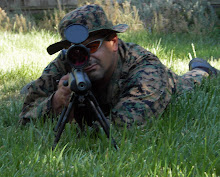In attempting to gain fine focus on my Celestron CPC, I found the primary focus knob insufficient for fine grained or quick focus of the telescope. So what does the primary focus knob do? Well it focuses the telescope, more specifically, the primary focus knob moves the primary mirror back and forth to focus an image in your eyepiece or camera (as the case may be). This mechanical movement of the mirror *may* be prone to many irregularities that make focusing your telescope challenging, like image shift (eg: movement in mirror causing the movement of an object in the Field of View [FOV]).
In addition to the potential movement (shift) of the mirror I was also unhappy with the amount of time it would take to gain focus on objects, even when using a bahtinov mask, where the 'sloppiness' associated with the original focuser led to lots of back and forth movement attempting to focus the object. (I will cover the use of a bahtinov mask in a future blog as it is a nifty tool to have in your toolbox). While looking for ways to combat the above, I started to look into 'crayford' style focusers as they took the movement out of the primary mirror, making focusing faster and more fine grained by moving the eyepieces or 'image train'.
I found a couple of different options and finally settled on a dual-speed focuser from William Optics, ordering it online directly from the company as opposed to one of it's distributors.

A few weeks later my new focuser came via the US Postal service, tightly wrapped and sufficiently encased in bubble wrap. The very first thing I noticed about this focuser was the weight, it came in at just under 2 lbs!
It was very well constructed, with a very smooth focal range (about 2 inches of travel). The small focus knob made getting precise focus super-simple, while the larger focus ring made for very quick focus.

My original telescope focusing routine, had me centering an object in my FOV, then using the primary focuser to move the primary mirror forward and backward until the object was close to focus, then I would move the primary mirror into a more solid position by turning the primary focus knob counter-clockwise to place the mirror in a more stable position. This was normally repeated at least 3-4 times as I would inadvertently 'pass' the optimal focus and have to perform a 'do-over' until I stopped the mirror at a perfect position.
Now the focus routine is far easier and faster to perform, here are the steps I take:
1) center the object in my FOV
2) perform a rough focus using the primary focus knob on the telescope, making sure to make the final movement counter-clockwise to steady the primary mirror
3) perform a second level focus with the larger focus knob on the focuser, getting the object to close focus
4) performed the final focus with the smaller focus knob on the focuser, putting the object in perfect focus
My focus routines now take less than half the time to obtain a perfect pinpoint focus and offer an easier and less frustrating time, giving me more time to stargaze and less time in set-up mode.
Just a note to say that both of my dual-speed focusers are very well constructed, I purchased the William Optics focuser after-market for my CPC, but the focuser that came stock on my Astro-Tech AT66ED finderscope is also well constructed and silky smooth. It doesn't matter what type of viewing you do, if you don't have one already a dual-speed focuser would be a very good investment, making the pinpoint focusing of objects a breeze.

Happy photon hunting!

No comments:
Post a Comment